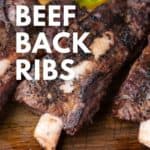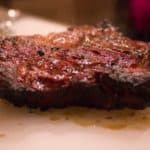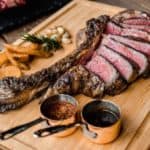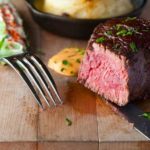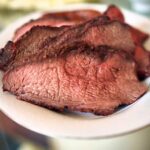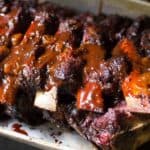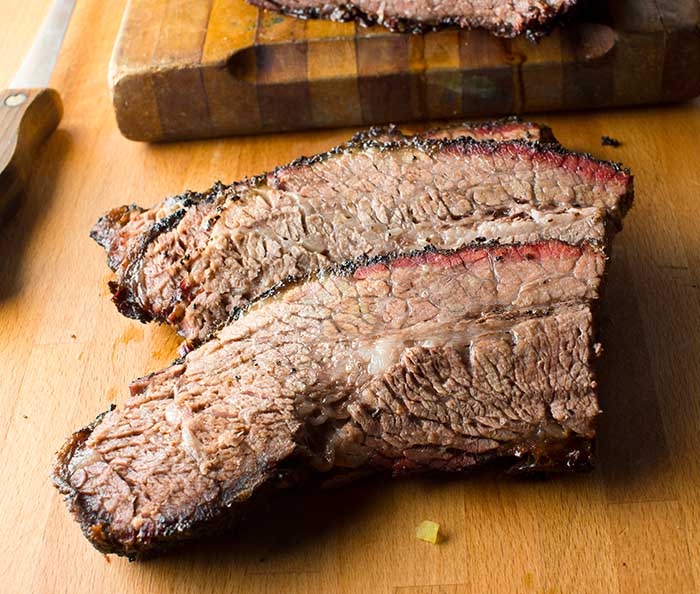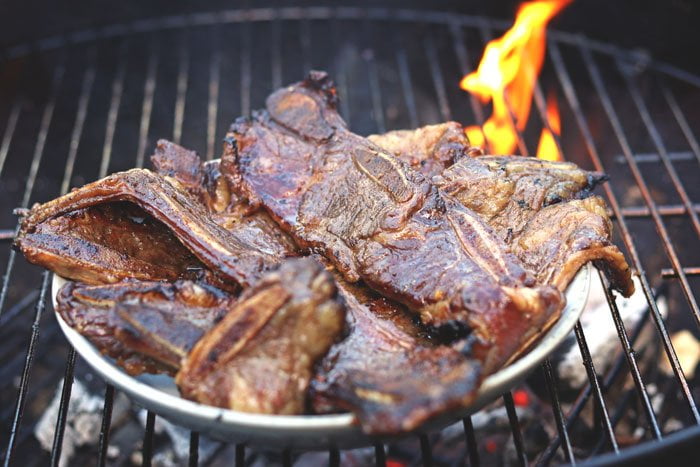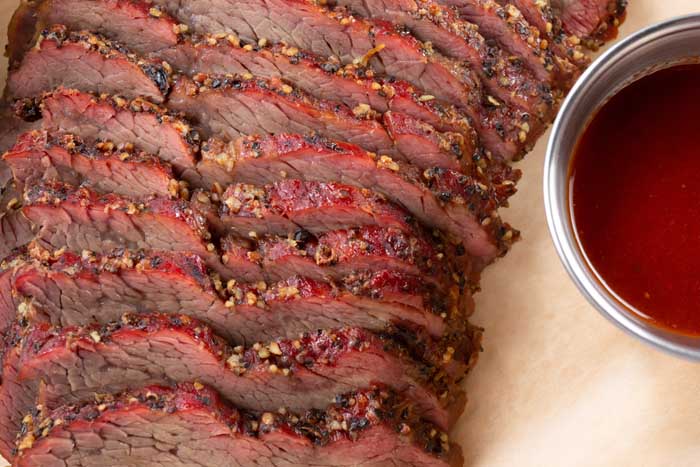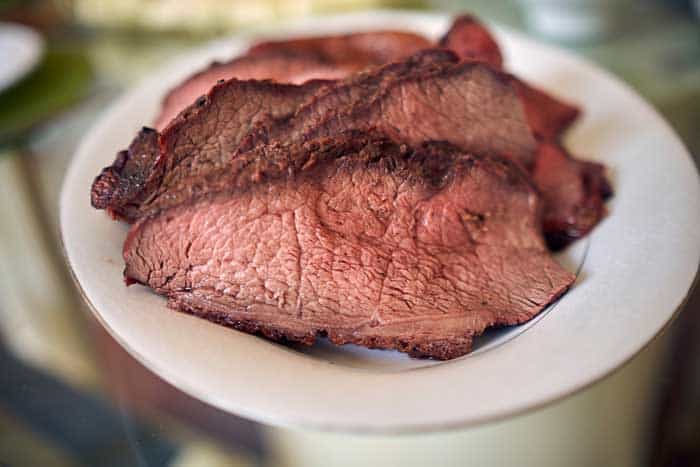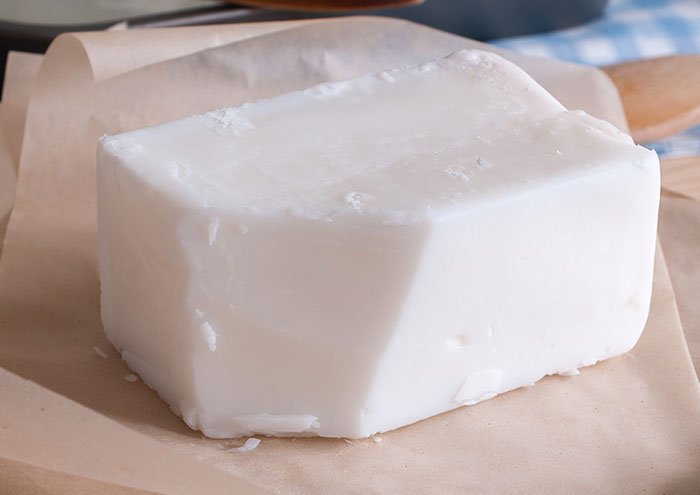Barbecue beef back ribs prepared with a dry brine and coffee dry rub for maximum flavor. Tender, juicy, and delicious. Exactly how any BBQ rib plate should be!
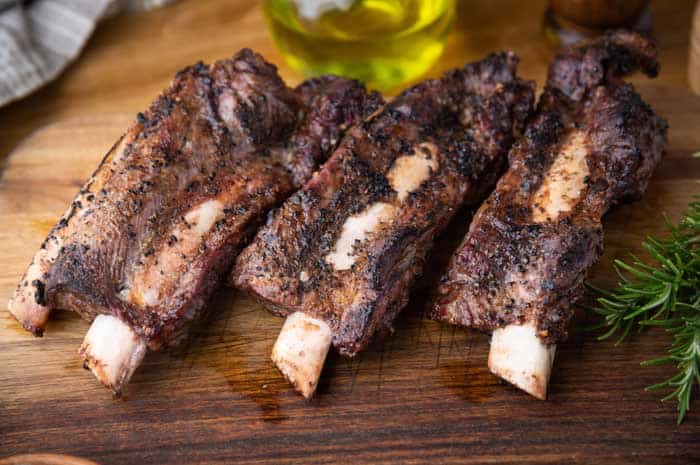
Beef back ribs might not be the first type of smoked ribs you think of when planning a barbecue platter, but once you give these a try you’ll never look back.
Served fresh off the smoker, these beef ribs are as tender and juicy as any other cut of barbecue meat. Best of all, they’re easy to smoke.
Learn how to cut them into shape and prepare them for the smoker with a dry brine, before matching them with the perfect dry rub and wood. Let’s get into it.
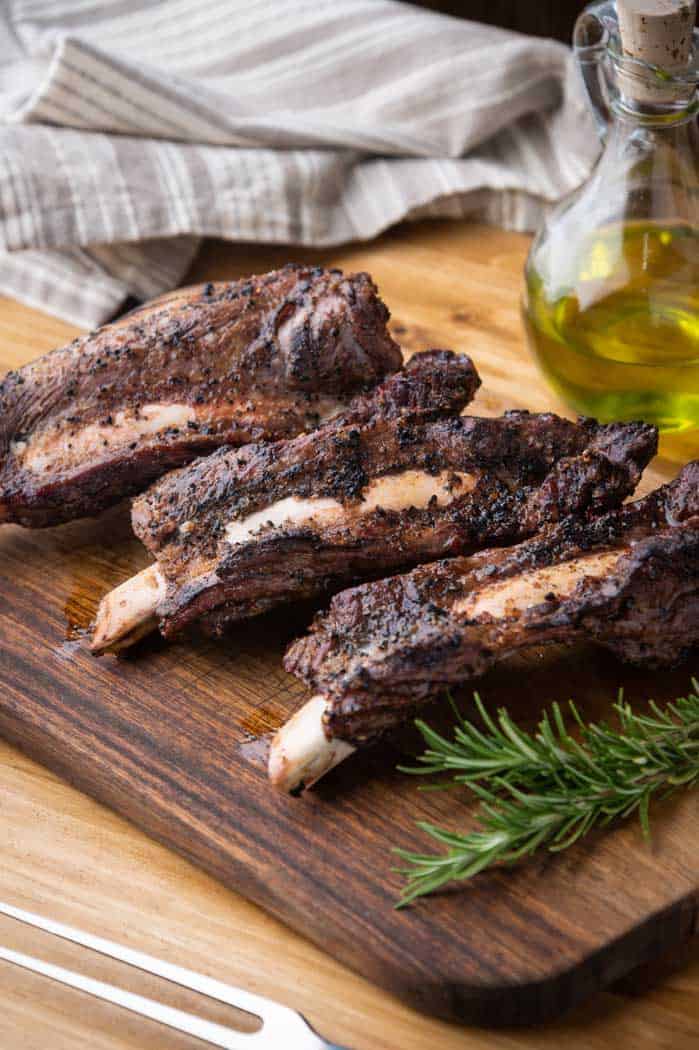
Beef Back Ribs Explained
Beef back ribs are beautifully tender with an incredibly rich flavor that emulates ribeye steak—just in BBQ rib form. Yes, they might be smaller and leaner than the mighty short rib, but beef back ribs still pack in an intense flavor that is taken to a new level with smoke.
From the loin section of the cow, beef back ribs sit underneath the ribeye roast or prime rib. If you’re a fan of either ribeye steak or smoked prime rib, then you know what flavor to expect here: Big, bold, and beefy.
Because butchers often reserve a lot of the meat for the ribeye, back ribs don’t always carry a lot of meat on top of the bones. In fact, they’re prone to featuring ‘shiners’, where the bone is exposed at either end, especially when it’s cooked. However, the meat that is left between the bones is pure gold.
And while these ribs are leaner than beef short ribs, with a little dry brine and low and slow smoke, we can turn them into beautifully tender BBQ ribs with a gorgeous mahogany bark and bold flavor.
How to Prepare Beef Back Ribs for Smoking
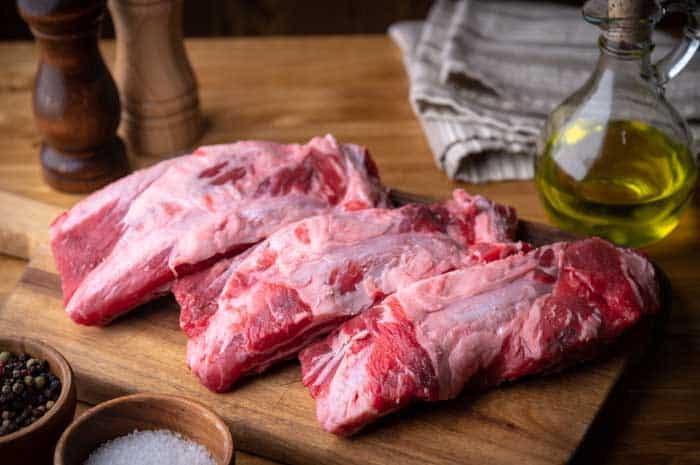
Remove the Membrane
If you have smoked any type of BBQ ribs before (either beef or pork), you’ll know that a big part of the meat prep is to remove the membrane. Also called silverskin, this thin layer sits on the underside of the ribs and will need removing. The membrane doesn’t render when cooked and, in fact, can turn rubbery. It’s practically inedible so we need to get rid of it.
Thankfully, removing the membrane from ribs is easy. Simple glide a blunt table knife under the membrane in one of the corners of the rib rack, and use a dry paper towel to get purchase on it. Slowly pull it away. With any luck, the entire thing will come away in one go. If not, you will need to keep going until the whole silverskin has come off.
Use meat scissors or a sharp knife to cut any other excess fat off the rack, and rinse the ribs clean with cold water. Finally, cut the rib rack into smaller single or double ribs before smoking. This will speed up cooking time, as well as allow the beef to cook more evenly and develop a beautiful brown color all over.
Dry Brine
Dry brining helps with water retention during the cooking process, which better ensures a final plate of juicy and flavorsome BBQ ribs. Dry brining back ribs is necessary if you want to make sure that they are correctly salted. Also, when you brine your ribs, you help them retain moisture. When you brine the ribs, it also helps to cut the cooking time slightly. You must cook ribs low and slow on the smoker. Brining will help speed this process along without compromising the quality and taste of the back ribs.
Apply coarse salt to the entire rib rack. Place in your refrigerator and leave for at least two to three hours. Overnight is also fine.
While some may be okay with brining for between 1 and 2 hours, this process can be done overnight to ensure that they soak up the flavors and also that you get the maximum benefits.
BBQ Dry Rub
For barbecue beef ribs we want a seasoning blend that is strong and robust enough to match the rich flavor of beef. Spicy or sweet mixes tend not to work very well, so I recommend my all-purpose coffee dry rub. It has a deep, earthy taste that improves when exposed to heat and smoke, and adds a nuanced and delicious note to most cuts of beef.
The dry rub ingredients are a simple blend of ground coffee, brown sugar, salt, cinnamon, and crushed black pepper. The key is to use instant coffee granules and not fresh. This might sound counterintuitive, but instant coffee is can stand up to high temperatures without turning bitter. The full ingredient list and measurements are in the recipe below.
If you want a BBQ rub with a little more heat and sweetness, try our classic beef rib rub recipe. It uses a blend of smoked paprika, cayenne pepper, and brown sugar to create a beautifully balanced flavor.
Smoking Times & Temperatures
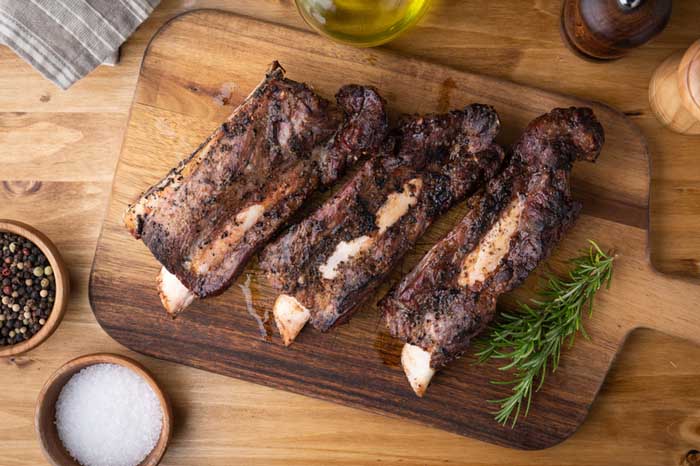
It will take approximately 3 to 5 hours to cook beef back ribs at 275°F, and for the internal temperature to reach 203°F. Time will vary depending on meat thickness and your smoker’s heat retention. Always use a smoker thermometer to ensure you get an accurate reading of your beef ribs’ doneness.
Ribs are safe to eat when they reach an internal temperature of 145°F (63°C), but they will still be tough. Smoking them to reach 203°F (96°C) allows the fat and collagen within the meat to render, giving you a more mouth-wateringly tender slab of ribs.
Best Wood for Smoking Back Ribs
I use a combination blend of oak and cherry for beef back ribs. Oakwood provides a deep flavor that complements the beef, while a hint of cherry adds a delicate sweet note. It also adds a (slight) touch of color!
Cooking with beef usually allows us to use strong smoking woods that are more pronounced in aroma. But, because there is less meat on this than other beef cuts like brisket or chuck, I recommend avoiding robust woods like hickory or mesquite.
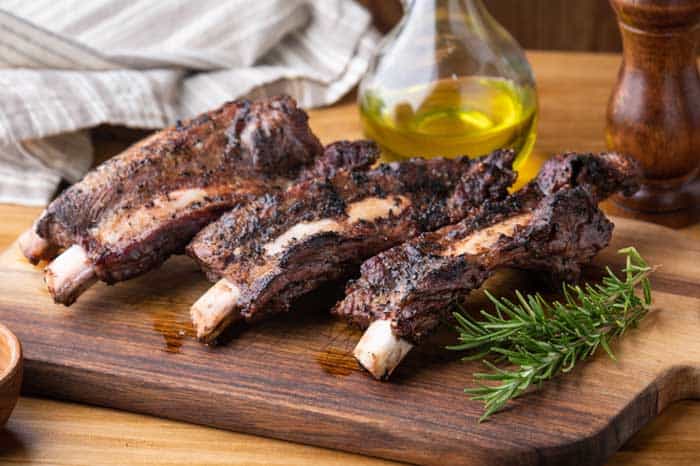
Should I Wrap Beef Back Ribs When Smoking?
There are two sides to wrapping ribs in foil or butcher paper. The paper can limit the amount of smoke that goes into the meat. This is good in that it also helps you control the color and the flavor of the meat. Wrapping in butcher’s paper, also known as parchment paper, also helps to seal in moisture and keep the ribs tender.
The other reason why you need to be wrapping up your ribs is that it helps speed up the process by isolating the temperatures. However, it is essential to make sure that you wrap them at the right time.

Smoked Beef Back Ribs
Ingredients
- 1 rack beef back ribs
- apple cider vinegar
- kosher salt
Dry Rub
- 4 tbsp brown sugar
- 6 tbsp ground coffee
- 3 tbsp kosher salt
- 2 tsp ground cinnamon
- 4 tsp crushed black peppercorns
Instructions
- Remove membrane from the ribs by using a blunt knife and dry paper towel. Use meat scissors or a sharp knife to remove any excess fat.
- Apply salt to ribs. Leave to dry brine in the refrigerator for 2-3 hours.
- Fire up your smoker to 275°F (135°C). If you are using a charcoal grill, set it up for 2-zone cooking.
- Combine dry rub ingredients in a small bowl. Apply liberally to beef rib rack, covering both sides.
- Transfer rib rack to the smoker or grill grates. Shut the chamber door or lid and smoke for 6 hours, or until the meat internal temperature reaches 203°F. Spray with apple cider vinegar every 1-2 hours.
- Remove beef ribs from the smoker. Tent in aluminum foil and leave to rest for 15-20 minutes.
- Slice into single or double rib sections. Serve and enjoy.
